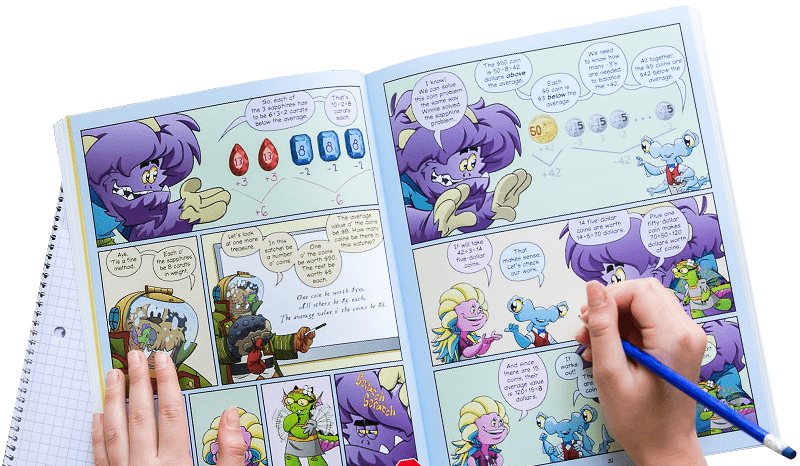Cartographer
A classic math proof is also a classic math coloring activity. Only four colors needed!
Instructions
Imagine you're coloring in a map of the United States. You want the different states to stand out from each other, so you avoid using the same color on states that border. (It's okay if states that only touch at a corner are the same color.) What's the fewest number of colors you would need?
If you'd like, let your math beast give this a try before giving the answer. Here is a map of the United States to print and color in.
It turns out you can color in your map using only four colors.
Remember, regions that border each other can't be the same color, but if two regions only touch at a corner, they can be the same color. (So in the map above, both Arizona and Colorado can be red, even though they touch at a corner.)
What's even cooler is that you can color any map using only four colors. This fact is called, unsurprisingly, the Four Color Map Theorem. Try making your own maps and coloring them.





Try to use fewer than four colors. Some maps only need three, or even two colors.


There are many ways to make a game of this. Try drawing a map that "breaks" the Four Color Map Theorem (that is to say, that would require at least five colors to fill in). It's an impossible but fun challenge. Or, draw maps and give them to each other to fill in.
Or, make it a game. Start with any blank (not colored in) map.

Take turns using a color to fill in any region of the map.


Try to force your opponent to need a fifth color. In the picture below, using any of the four original colors would cause two regions of the same color to border, which isn't allowed.

The next player won't be able to fill in a region without using a fifth color, so they lose.

See Variations below for other possible games.
Don't forget: it's Beast Academy Playground, not Beast Academy Study Hall. Change the rules, be silly, make mistakes, and try again. The Variations and Learning Notes are here for you if you want to dive deeper, but not all of them apply to learners of every age. The most important thing is to have fun.
What do you think of this activity?
We're always looking to improve. Submit your feedback to us below.
- paper
- markers
- spatial reasoning
- wonder
- strategic thinking
- MP1
- MP3

Ready to level up?
Keep problem solving with Beast Academy’s full math curriculum for students ages 6–13. Check out our captivating comic book series and immersive online platform.
LEARN MOREBring problem-solving to your classroom
Keep your entire class engaged with a full book and online math curriculum, for students ages 6–13. 98% of teachers say they’re satisfied with Beast Academy.
LEARN MORE



Ready to level up?
Keep problem solving with Beast Academy’s full math curriculum for students ages 6–13. Check out our captivating comic book series and immersive online platform.
LEARN MOREBring problem-solving to your classroom
Keep your entire class engaged with a full book and online math curriculum, for students ages 6–13. 98% of teachers say they’re satisfied with Beast Academy.
LEARN MORE
Sign up to be notified when new videos are released.













































